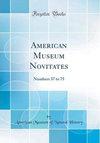德克萨斯州鞭尾蜥蜴的杂交:Aspidoscelis laredoensis和a . Gularis,以及杂交繁殖的注释
IF 1.1
3区 环境科学与生态学
Q3 BIODIVERSITY CONSERVATION
引用次数: 4
摘要
32个遗传位点的核型和同工酶数据压倒性地支持了laredoaspidoscelis laaredoensis是一种二倍体全雌性物种,是古拉古拉与性线古拉的杂交起源。在实验室中培养的三代母系后代的同工酶的比较表明,它们是通过孤雌生殖克隆进行繁殖的。除了两种先前描述的形态型(模式类A和B)发生在德克萨斯州南部,我们报告了三种基于同工酶的全雌性克隆谱系的存在。这些谱系中至少有一个的个体偶尔会在自然界中与古拉古拉的雄性杂交,产生可存活且健康的三倍体后代,这些后代可以长到成年,其中一个在实验室中自己产生了一个后代,可能代表了一个新的无性繁殖的三倍体物种。三倍体杂交的克隆后代可能存在于德克萨斯州南部和/或墨西哥北部,等待发现。这些可能代表了一个新物种,看起来与a . laredoensis非常相似。本文章由计算机程序翻译,如有差异,请以英文原文为准。
Hybridization between Whiptail Lizards in Texas: Aspidoscelis laredoensis and A. Gularis, with Notes on Reproduction of a Hybrid
ABSTRACT Karyotypes and allozyme data for 32 genetic loci overwhelmingly support the conclusion that Aspidoscelis laredoensis is a diploid all-female species that had a hybrid origin between A. gularis × A. sexlineatus. Comparisons of allozymes in individuals representing three mother-to-daughter generations raised in the laboratory suggest that they reproduce by parthenogenetic cloning. In addition to two previously described morphotypes (pattern classes A and B) that occur in southern Texas, we report the existence of three all-female clonal lineages based on allozymes. Individuals of at least one of these lineages occasionally hybridize in nature with males of A. gularis, producing viable and healthy triploid offspring that can grow to adulthood, one of which herself produced an offspring in the laboratory and could have represented a new, clonal triploid species. The possibility exists that cloned offspring of triploid hybrids are present in South Texas and/or northern Mexico, awaiting discovery. These would represent a new species that would appear to be very similar to A. laredoensis.
求助全文
通过发布文献求助,成功后即可免费获取论文全文。
去求助
来源期刊

American Museum Novitates
环境科学-动物学
CiteScore
3.00
自引率
6.70%
发文量
8
审稿时长
>36 weeks
期刊介绍:
The Novitates (Latin for "new acquaintances"), published continuously and numbered consecutively since 1921, are short papers that contain descriptions of new forms and reports in zoology, paleontology, and geology.
 求助内容:
求助内容: 应助结果提醒方式:
应助结果提醒方式:


